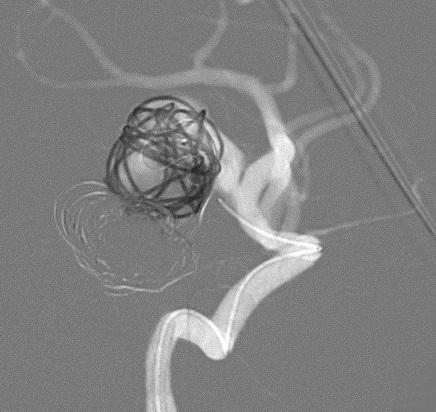Usted está aquí
Peruvian Journal of Neurosurgery
Endovascular treatment of a large, embolized, unruptured cerebral aneurysm that presented rechanneling
YHAKELIN ESPINOZA C, JOHN VARGAS U, RODOLFO RODRÍGUEZ V, WALTER DURAND C, JESÚS FLORES Q, DANTE VALER G, GIANCARLO SAAL Z.
Abstract (Spanish) ||
Full Text ||
PDF (Spanish) ||
PDF (English)
ABSTRACT
Introduction: Endovascular treatment of ruptured and non-ruptured brain aneurysms is an appropriate option in most patients. In narrow neck aneurysms, treatment with coils is sufficient, but in those with wide necks, the use of stent-assisted coils or flow diverters is necessary. Endovascular treatment of intracranial aneurysms is effective and provides complete occlusion in up to 85% of cases, however, there are cases of incomplete obliteration or recanalization that require treatment.Clinical Case: A 79-year-old woman with a history of high blood pressure and embolization with coils of an unruptured cerebral aneurysm of the left posterior communicating artery, 5 years ago, Raymond Roy I in the immediate postoperative period. She has been presenting with right hemiparesis and III left cranial nerve palsy for 1 year. An angiotomography (angioCT) showed recanalization of the aneurysm, so it was decided to perform an embolization with coils and stents, achieving complete occlusion of the aneurysm (Raymond Roy I). In the following weeks, the patient regained strength in the right hemibody and recovered function of the III left cranial nerve.Conclusion: Recanalization of aneurysms undergoing endovascular treatment is infrequent, less than 10%, and is associated with complex aneurysms. In these cases, the use of advanced or combined endovascular techniques is recommended to achieve total closure of the aneurysm and decrease the associated morbidity and mortality rate.Keywords: Intracranial Aneurysm, Endovascular Procedures, Stent, Embolization Therapeutic. (Source: MeSH NLM) |



